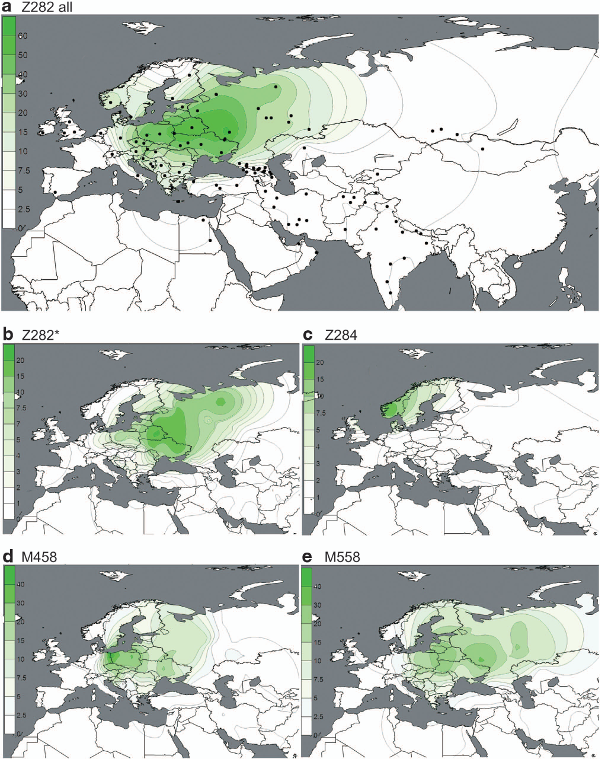Following the new map of R1a-M458, here is the map of R1a-CTS1211 (aka M558 or Y93). The distribution is more exclusively Balto-Slavic than M458, although the Czechs have very little of it.
Note that about half of all R1a in Italy, south-west France and Spain is CTS1211, meaning that it was very probably brought by the Visigoths and Ostrogoths. The Goths, although originally from southern Sweden and north-east Germany, had lived for several centuries in Poland and Ukraine before moving into the Roman Empire (starting with the Balkans), and appear to have absorbed local Proto-Slavic populations.
The map is based on the data from Underhill et al. 2014, but with a few adaptations when the total R1a frequencies didn't match my own data. For example, my data showed considerably higher levels of R1a in Slovenia and Hungary than the tiny sample from the paper, and I therefore increased the percentages. Underhill et al. didn't have any sample from France or Spain, so I had to infer the proportion based on small samples from FTDNA and adapt it to my earlier map of overall R1a.

Note that about half of all R1a in Italy, south-west France and Spain is CTS1211, meaning that it was very probably brought by the Visigoths and Ostrogoths. The Goths, although originally from southern Sweden and north-east Germany, had lived for several centuries in Poland and Ukraine before moving into the Roman Empire (starting with the Balkans), and appear to have absorbed local Proto-Slavic populations.
The map is based on the data from Underhill et al. 2014, but with a few adaptations when the total R1a frequencies didn't match my own data. For example, my data showed considerably higher levels of R1a in Slovenia and Hungary than the tiny sample from the paper, and I therefore increased the percentages. Underhill et al. didn't have any sample from France or Spain, so I had to infer the proportion based on small samples from FTDNA and adapt it to my earlier map of overall R1a.



